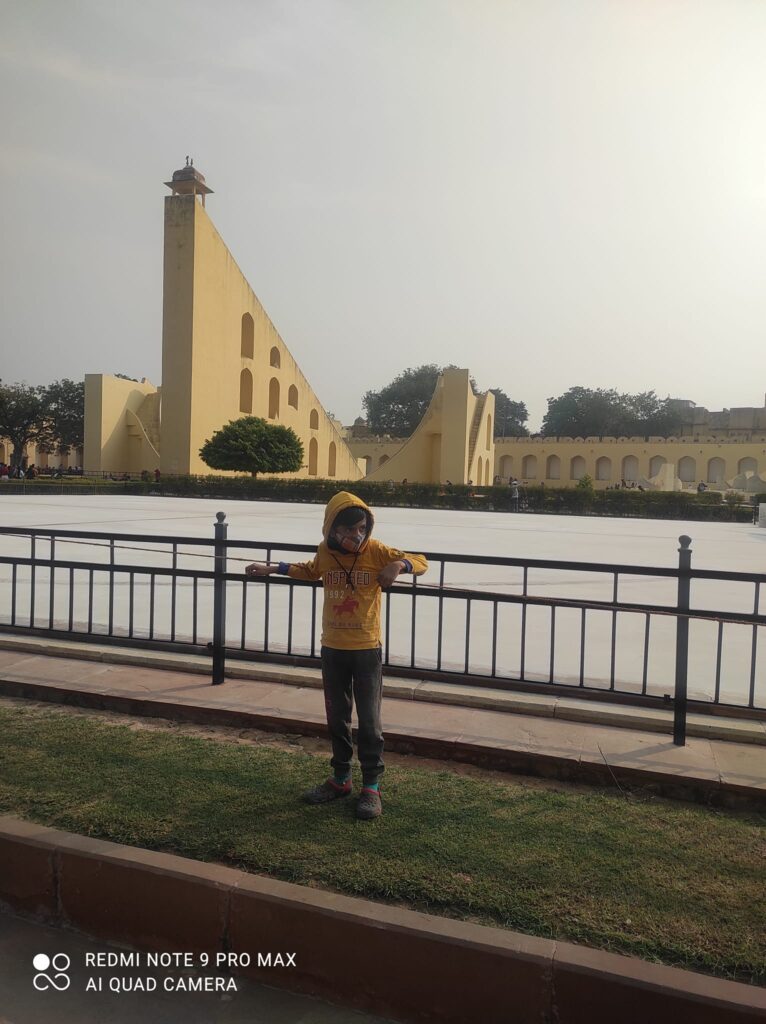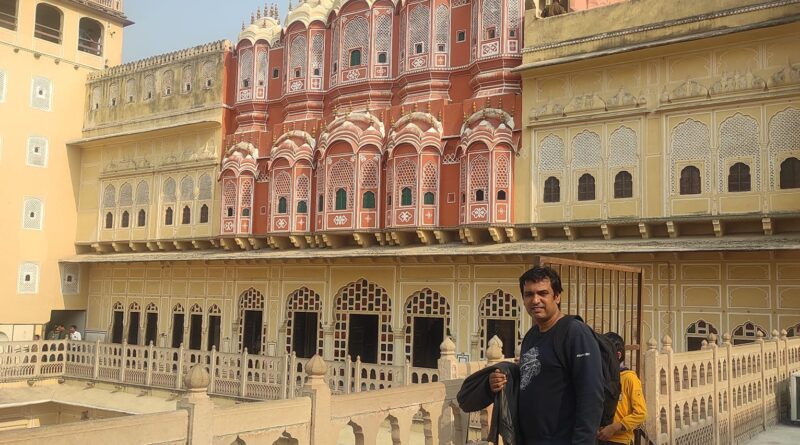The Magnificent Pink City and More
Jaipur along with Agra and Delhi forms the golden triangle in north India. In 1876 it also got be called the Pink City when Maharaja Man Singh II painted the entire city pink in honor of the visiting Prince of Wales, later to be crowned Edward VII. Ever since, and even today, it has been getting a coat of fresh pink paint every once in a while. However, there is far more to Jaipur than the attractions within the fortified wall of the Pink City.

The city traces its origins back to the war lord Tej Karan who made the strategic hills around the city his stronghold. In 1592 one of his descendents, Maharaja Man Singh, who was a navratna (one of the Nine Jewels) in the court of the Mughal Emperor Akbar started to build magnificent hilltop citadel of Amber. This fortified city served as the capital till 1727 when Maharaja Jai Singh II, who no longer felt threatened by the crumbling Mughal Empire or the faltering advance of the Marathas, decided to build a new planned city, to be named Jaipur after himself in the plains below.
This new city which radiates out from a central hub around the City Palace is as logical in its plan as it is beautiful. All the avenues, roads and streets within what was later to be known as the Pink City run straight through a grid of nine rectangles that are lined with uniform rows of shops on both sides and punctuated with beautiful monuments.
Right in the very heart of Jaipur is the City Palace complex which is a blend of Mughal and Rajasthani architectural styles. The Maharaja Sawai Man Singh II Museum and the Maharani’s Palace (with its display of Rajput weapons) are part of the complex. Located in the adjoining compound is Jantar Mantar, the largest and most impressive of the five ancient observatories in India. A short distance away is Hawa Mahal, the iconic palace of wind with honeycombed windows overlooking the busy bazaar is undoubtedly the most recognized and much photographed landmark in the city. And the colorful bazaars of Jaipur which brim with textiles, handicrafts, traditional jewelry and other treasures are a shopper’s delight.

Perched on the summit of Moti Dungri, a small hillock within the city, is the replica of a Scottish castle and a little temple dedicated to Lord Ganesh. And then there is the cenotaph studded Gaitore, the final resting place of the Maharajas of Jaipur.
Jaipur is surrounded with a number of magnificent hilltop forts that brim with legend and history. Amber, the elegant sandstone and marble citadel, located on a hill 11 km from the main city, was the ancient residence of the local rulers before they shifted their capital to Jaipur in the plains below.
Of the many treasures housed in Jaigarh Fort which overlooks Jaipur is Jai Ban, the largest cannon in the world. It weighs in at 150 tons and consumes 100 kilograms of gunpowder to fire a two-ton cannonball over a distance of 35 kilometers. Yet, for all its threatening postures, the cannon never saw active duty. In fact, it was test fired only once and the gunner who lit the fuse had to submerge his head in a trough of water in order to prevent his eardrums being shattered from the ensuing blast.
The main attraction of Nahargarh Fort is an ancient palace comprising 12 interconnected identical suites for queens and an additional suite for the king.
Just outside the walled city is Albert Hall, a colonial structure that stands right in the middle of the sprawling Ram Niwas garden. Kanak Vrindavan is a vast terraced garden in the foothills of the Nahargarh hills embellished with an exquisitely carved temple.
File Fact
Jaipur, on the eastern apex of the golden tourist triangle out of Delhi, is well connected by road, rail and air to most major cities around the country.
Of the many hotels – from 5-star to shoe-string budget – in Jaipur, the Rambagh and Jai Mahal Palace Hotels run by Taj Hotels, Resorts and Palaces and Oberoi’s Rajvilas on the outskirts of the city are the pick of the lot.

